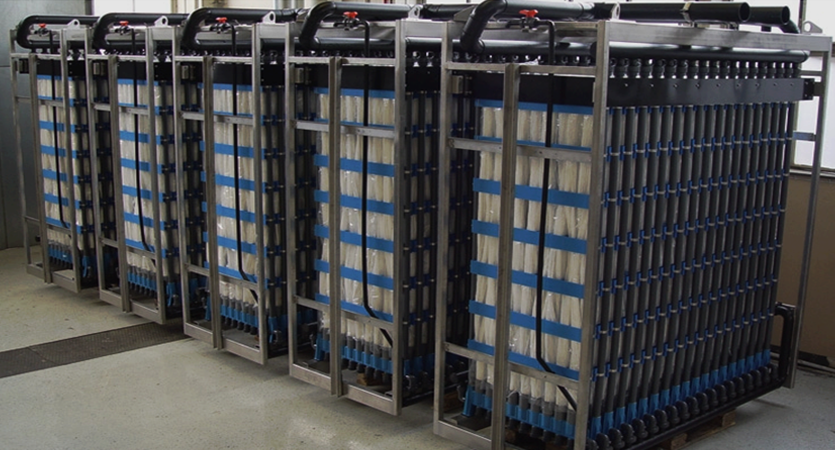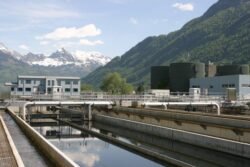Biological Reactor In Wastewater Treatment

Biological Reactors in Wastewater Treatment
The impetus of sustainable development has driven technological advancements across various sectors, particularly in waste management. One of the most notable advancements in this regard is the biological reactor, a key component in modern wastewater treatment facilities. Biological reactors apply natural processes to degrade and remove contaminants from wastewater, thus playing a vital role in environmental protection and public health. This article explores the fundamentals, operational aspects, types, advantages, and evolving technologies related to biological reactors in wastewater treatment.
Fundamentals of Biological Reactors
What is a Biological Reactor?
A biological reactor, often referred to as a bioreactor, is a vessel or system engineered to support a biologically active environment. In the context of wastewater treatment, bioreactors harness microbial communities to metabolize contaminants, converting them into less harmful substances through biological processes such as aerobic and anaerobic digestion, nitrification, denitrification, and bio-phosphorus removal.
Basic Mechanisms
-
- Aerobic Digestion: In aerobic bioreactors, oxygen is supplied to support the metabolic activities of aerobic microorganisms. These microbes break down organic matter, reducing biochemical oxygen demand (BOD) and chemical oxygen demand (COD) of the effluent. The end products are typically carbon dioxide, water, and biomass.
-
- Anaerobic Digestion: Conversely, anaerobic bioreactors function in the absence of oxygen, promoting the growth of anaerobic microorganisms that digest organic waste, producing biogas (mainly methane and carbon dioxide) as a byproduct. Anaerobic processes are efficient for high-strength wastes and generate energy-rich biogas.
-
- Nitrification and Denitrification: These processes involve the conversion of ammonia to nitrate (nitrification) and subsequently nitrate to nitrogen gas (denitrification). These reactions are typically carried out by specialized autotrophic and heterotrophic bacteria, reducing nitrogen levels in wastewater to prevent eutrophication.
-
- Bio-Phosphorus Removal: Certain bacteria, known as polyphosphate-accumulating organisms (PAOs), assimilate phosphorus from wastewater and store it intracellularly, mitigating eutrophication risks.
Types of Biological Reactors
Suspended-Growth Bioreactors
In suspended-growth systems, microbial communities are kept in suspension within the reactor’s liquid phase. The most common examples are:
-
- Activated Sludge Process (ASP): This widely-used method involves mixing wastewater with a concentrated microbial solution or sludge. Activated sludge systems can be further categorized into conventional activated sludge, extended aeration, and sequencing batch reactors (SBRs).
-
- Sequencing Batch Reactors (SBRs): SBRs are a variation of the traditional activated sludge process. They carry out treatment in batches, with cycles typically consisting of fill, react, settle, decant, and idle phases, allowing for flexible operation and efficient nutrient removal.
-
- Membrane Bioreactors (MBRs): Combining activated sludge treatment with membrane filtration, MBRs provide superior effluent quality and reduce the footprint needed for secondary clarifiers. These systems are effective in filtering out pathogens and fine particles, ensuring high treatment standards.
Attached-Growth Bioreactors
In these systems, microorganisms grow on the surface of submerged or fixed media. Common examples include:
-
- Trickling Filters: Wastewater is sprinkled over a bed of media (typically rocks or plastic), creating a biofilm on the media surfaces. The biofilm microbes degrade organic material as the wastewater percolates through.
-
- Rotating Biological Contactors (RBCs): In an RBC system, media are mounted on rotating discs partially submerged in wastewater. The rotation ensures periodic exposure to air and wastewater, facilitating microbial growth and organic matter degradation.
-
- Moving Bed Biofilm Reactors (MBBRs): These reactors use floating plastic carriers that provide a large surface area for biofilm growth while being mixed within the reactor. MBBRs offer advantages such as resistance to shock loads and ease of retrofitting into existing plants.
Hybrid Systems
Hybrid systems combine elements of both suspended-growth and attached-growth technologies to offer enhanced performance. Examples include Integrated Fixed-Film Activated Sludge (IFAS) systems which incorporate fixed biofilm media within activated sludge reactors.
Design and Operational Considerations
Reactor Design
Designing a biological reactor necessitates a comprehensive understanding of wastewater properties, desired effluent quality, and site-specific conditions. Key factors include:
-
- Hydraulic Retention Time (HRT): The time wastewater remains in the reactor, with longer HRT favoring complete degradation of organic materials in low-rate systems, while shorter HRT can be applied in high-rate systems.
-
- Solids Retention Time (SRT): The time biomass remains in the reactor, tailored to optimize microbial community structure for specific treatment goals.
-
- Aeration and Mixing: For aerobic reactors, effective aeration is essential. Options range from surface aerators to diffused aeration systems. Proper mixing ensures uniform distribution of microorganisms and substrates.
-
- Loading Rates: Both organic and hydraulic loading rates influence reactor performance, requiring careful balance to prevent overloading and underloading.
-
- Environmental Conditions: Parameters like temperature and pH affect microbial activity. Bioreactor designs may incorporate heating, cooling, or buffering systems to maintain optimal conditions.
Operational Aspects
-
- Start-Up and Stabilization: Initial seeding with microbial cultures, gradual loading increases, and monitoring microbial activity are essential for stable reactor operation.
-
- Monitoring and Control: Regular measurement of parameters like dissolved oxygen, nutrient levels, and biomass concentration is critical. Advanced systems integrate sensors and automated control loops to maintain optimal conditions.
-
- Sludge Management: Biological treatment generates excess biomass or sludge, necessitating proper handling. Options include dewatering, digestion, and composting.
-
- Maintenance: Regular cleaning, checking mechanical components, and removing fouling agents (especially in membrane systems) are crucial for long-term performance.
Advantages and Challenges
Advantages
-
- Eco-Friendly: Biological reactors utilize natural processes, resulting in fewer chemicals and lower energy consumption compared to purely physical or chemical treatments.
-
- High Efficiency: Modern bioreactors can achieve significant reductions in BOD, COD, nitrogen, and phosphorus levels, producing high-quality effluent suitable for various reuse applications.
-
- Versatility: They can treat a wide range of wastes from municipal to industrial effluents, and even adapt to variable influent characteristics.
-
- Energy Recovery: Anaerobic systems produce biogas, a renewable energy source that can offset operational costs and contribute to energy sustainability.
Challenges
-
- Complexity: Design, installation, and operation of bioreactors require specialized expertise, which can pose challenges for small municipalities or developing regions.
-
- Cost: The initial capital investment for advanced systems can be high, though operational efficiencies often offset these costs over time.
-
- Sludge Handling: Managing excess biomass requires proper dewatering, disposal, or utilization, adding another layer of complexity.
-
- Sensitivity: Biological systems can be sensitive to toxic influents, temperature fluctuations, and other environmental changes, necessitating robust monitoring and control systems.
Evolving Technologies
Biological treatment technologies continue to evolve, driven by the need for improved efficiency, sustainability, and cost-effectiveness. Emerging trends include:
-
- Advanced Metabolic Engineering: Genetic engineering and synthetic biology are being explored to enhance microbial capabilities, enabling more efficient pollutant breakdown and nutrient recovery.
-
- Integrated Systems: Combining biological treatment with physical, chemical, and advanced oxidation processes creates hybrid solutions that provide comprehensive wastewater treatment.
-
- Resource Recovery: Focus is shifting towards resource recovery, with systems designed for nutrient extraction (e.g., phosphorus recovery as struvite) and water reuse, contributing to circular economy principles.
-
- Automation and AI: Smart sensors, real-time monitoring, and artificial intelligence-driven control systems optimize reactor performance, enhance process stability, and reduce operational costs.
-
- Decentralized Treatment: Small-scale, modular bioreactors offer decentralized treatment solutions, particularly valuable in remote areas or for on-site industrial wastewater treatment.
Case Studies
Municipal Wastewater Treatment
Case Study: The Singapore Deep Tunnel Sewerage System (DTSS)
Singapore’s DTSS exemplifies cutting-edge wastewater management, integrating extensive use of bioreactor technology. The Changi Water Reclamation Plants employ advanced MBR systems to achieve high effluent quality, contributing to Singapore’s water reuse initiatives under the NEWater program. The successful implementation showcases the potential of large-scale bioreactors in urban wastewater management and water reclamation.
Industrial Wastewater Treatment
Case Study: Anaerobic Digestion at a Dairy Processing Plant
A dairy processing plant in the Netherlands implemented an anaerobic digestion system to treat high-strength wastewater. The bioreactor efficiently reduced organic load, generating biogas used for onsite energy needs. The project not only improved wastewater quality but also enhanced the plant’s sustainability by transforming waste into a resource.
Conclusion
Biological reactors represent a cornerstone of modern wastewater treatment, leveraging the power of microbial metabolism to transform contaminants into less harmful substances. Through various designs, including suspended-growth, attached-growth, and hybrid systems, bioreactors address a wide array of treatment needs across municipal and industrial applications. While challenges such as complexity, cost, and sensitivity exist, the advantages in terms of efficiency, eco-friendliness, and versatility make these systems indispensable.
As wastewater treatment technologies continue to evolve, the integration of advanced engineering, resource recovery, and automation promises to further enhance the efficiency and sustainability of biological reactors. By embracing these innovations, we can better protect water resources, promote public health, and contribute to a more sustainable future.


